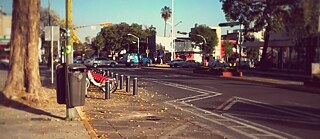Fear of Stagnation
Standstill in Goethe’s Time
Back in Johann Wolfgang von Goethe’s day, circulation was regarded as the ideal, and standstill as a threat. Many things circulated or came to a standstill: money, goods, ideas, blood, and other bodily fluids — even in poetry and prose.
Systems were often metaphorically described in terms of “automata” — fine-mechanical apparatuses and clockwork devices — in the 18th century, and in terms of “machines” and their mechanics in the 19th century. But before that, up to and including the 17th century, the “body” and its organs served as the model for the complex interaction of multiple parts in a larger whole. Accordingly, the thickening of bodily fluids or “humors” meant standstill and death.
The circulation of blood had already been described back in the 13th century by the Arab physician Ibn an-Nafis, but it wasn’t until his English counterpart William Harvey rediscovered blood circulation in 1628 that it became commonplace in Europe — and a metaphor that would soon come to be used to describe other complex systems as well. Blood circulation gave rise to new theories in other disciplines as well, such as that of mercantile and monetary circulation. In Johann Christoph Adelung’s 18th-century German dictionary, for example, he writes under the entry for the word “Umtrieb”: “The circulation of blood […]. The circulation of money, as it is often passed from one hand to another […]. A good comes into circulation when it is widely purchased and resold.”
The first depiction of the economic cycle in 1758 by François Quesnay, Louis XV’s personal physician and the founder of physiocratic economics, was enthusiastically taken up. Even 20th-century concepts in communication and media theories were based on the anatomical and then economic concept of circulation, of a closed-loop cycle.
Friedrich Schiller’s appeal to “bring idle money into circulation” prefigures Karl Marx’s idea of a pecuniary cycle that can come to a halt. “When the division of labor first began to take place,” Adam Smith remarks in The Wealth of Nations, “this power of exchanging must have been very much clogged and sluggish in its operations.” So “clogging,” and “stoppage” in general, was not confined to exchanges of a verbal or financial nature, but posed a threat to any exchange of goods, including barter — that is, even before circulation — which represents the smallest unit of the circular process.
According to Adelung’s definition, the German word “Stocken” means to “stop moving and thicken, commonly used for liquid bodies to mean coagulate, curdle.” In addition to the obstruction of exchange caused by reduced mobility, Adelung makes the commercial meaning of the term “Stocken” explicit: “To stop moving. Water stagnates [stockt] when it does not run off. [...] Especially figuratively. Money becomes idle [stockt] when it does not circulate, when its circulation is inhibited. To cause a halt [Stockungen] in the circulation of money.”
Many things circulated in Goethe’s day: money, goods, ideas, blood, and other body fluids, utterances.
“They” are the spirits. What makes this passage from Goethe’s Faust most interesting is its reference to the theory of humors, which flourished in Goethe’s era and fused with the theory of temperament (Adolph Freiherr von Knigge, Christoph Wilhelm Hufeland) in humoral medicine. Stagnation also has a correlation to loneliness, to a breach of one’s obligation to socialize. Viscosity, the extreme form of which is clogging or clotting, is expressed as a melancholic or phlegmatic constitution, which is interrelated with loneliness, among other things.
Physiological stagnation is just as fatal for an organism as mercantile stagnation is for the national economy or verbal stagnation for society: Christoph Wilhelm Hufeland writes in The Art of Prolonging Life, “The blood is collected in the interior large vessels, pulsation becomes irregular; the heart is overcharged and cannot move freely. The important business of circulation is therefore deranged.” This “derangement” of the circulation is “life-shortening,” according to Hufeland. Given the analogies cited above, it comes as little surprise that, according to Bernd Mahl, Hufeland was an “enthusiastic Smithian.”
Dying off and stagnation happen by themselves; both are self-activating processes that are independent of the acting subject. The subject, on the other hand, “animates” and “sets in motion,” while the object is passive. The passive state of things inanimate and stagnant thus appears as the given, natural state, arising automatically without outside intervention.
The stagnant is the natural, Goethe’s “actually stagnant barbarous,” that is, the uncultivated, in which no exchange takes place. “Man loves change [...]; standing still [...] is tedious [...].” And tedium causes “thickening of the blood” (Hufeland). A vicious circle! “Inanimate nature changes too slowly.” (Christian Garve)
This is why society artfully lends a hand: movement and change are correlated with exchange. This is a cultural phenomenon. Standstill and stagnation, on the other hand, are seen in interaction with nature. As a threat to exchange and in view of its communicative function, standstill and stagnation are also a cultural threat.
The circulation of blood had already been described back in the 13th century by the Arab physician Ibn an-Nafis, but it wasn’t until his English counterpart William Harvey rediscovered blood circulation in 1628 that it became commonplace in Europe — and a metaphor that would soon come to be used to describe other complex systems as well. Blood circulation gave rise to new theories in other disciplines as well, such as that of mercantile and monetary circulation. In Johann Christoph Adelung’s 18th-century German dictionary, for example, he writes under the entry for the word “Umtrieb”: “The circulation of blood […]. The circulation of money, as it is often passed from one hand to another […]. A good comes into circulation when it is widely purchased and resold.”
The first depiction of the economic cycle in 1758 by François Quesnay, Louis XV’s personal physician and the founder of physiocratic economics, was enthusiastically taken up. Even 20th-century concepts in communication and media theories were based on the anatomical and then economic concept of circulation, of a closed-loop cycle.
The Threat of Standstill
In Goethe’s lifetime (c. 1770–1830), “exchange” at all levels was regarded as the norm — and hence deviation from that norm, that is, the “stoppage” or “blockage” of exchange processes, as an event and a threat. The various cycles were constantly threatened by standstill. Actually, things hardly ever came to extremes: A stalled conversation, for example, appears to have been a social impossibility, a breach of etiquette. To ward off any risk of interruption, conversations tended to be conducted very fast and intensively.Friedrich Schiller’s appeal to “bring idle money into circulation” prefigures Karl Marx’s idea of a pecuniary cycle that can come to a halt. “When the division of labor first began to take place,” Adam Smith remarks in The Wealth of Nations, “this power of exchanging must have been very much clogged and sluggish in its operations.” So “clogging,” and “stoppage” in general, was not confined to exchanges of a verbal or financial nature, but posed a threat to any exchange of goods, including barter — that is, even before circulation — which represents the smallest unit of the circular process.
According to Adelung’s definition, the German word “Stocken” means to “stop moving and thicken, commonly used for liquid bodies to mean coagulate, curdle.” In addition to the obstruction of exchange caused by reduced mobility, Adelung makes the commercial meaning of the term “Stocken” explicit: “To stop moving. Water stagnates [stockt] when it does not run off. [...] Especially figuratively. Money becomes idle [stockt] when it does not circulate, when its circulation is inhibited. To cause a halt [Stockungen] in the circulation of money.”
Many things circulated in Goethe’s day: money, goods, ideas, blood, and other body fluids, utterances.
In die Welt weit,
Aus der Einsamkeit,
Wo Sinnen und Säfte stocken,
Wollen sie dich locken.
In the busy world to dwell,
Fain they would allure thee hence.
For within this lonely cell,
Stagnate sap of life and sense.
Aus der Einsamkeit,
Wo Sinnen und Säfte stocken,
Wollen sie dich locken.
In the busy world to dwell,
Fain they would allure thee hence.
For within this lonely cell,
Stagnate sap of life and sense.
“They” are the spirits. What makes this passage from Goethe’s Faust most interesting is its reference to the theory of humors, which flourished in Goethe’s era and fused with the theory of temperament (Adolph Freiherr von Knigge, Christoph Wilhelm Hufeland) in humoral medicine. Stagnation also has a correlation to loneliness, to a breach of one’s obligation to socialize. Viscosity, the extreme form of which is clogging or clotting, is expressed as a melancholic or phlegmatic constitution, which is interrelated with loneliness, among other things.
Stagnation is Natural
Naturally, age is an important factor too. According to Knigge, when “our life’s winter covers our hair with snow, and now the blood rolls more slowly through our veins,” stagnation is near. As our blood flow slows and our body fluids tend to thicken, we become less willing and able to circulate. But actual standstill on a biological level is death. Adelung writes that “clotting” and “spoiling” correlate with “curdling” (milk) and “death” (blood). As Novalis put it, “Death is nothing but the interruption of the alternation between inner and outer stimulus — between soul and world.”Physiological stagnation is just as fatal for an organism as mercantile stagnation is for the national economy or verbal stagnation for society: Christoph Wilhelm Hufeland writes in The Art of Prolonging Life, “The blood is collected in the interior large vessels, pulsation becomes irregular; the heart is overcharged and cannot move freely. The important business of circulation is therefore deranged.” This “derangement” of the circulation is “life-shortening,” according to Hufeland. Given the analogies cited above, it comes as little surprise that, according to Bernd Mahl, Hufeland was an “enthusiastic Smithian.”
Dying off and stagnation happen by themselves; both are self-activating processes that are independent of the acting subject. The subject, on the other hand, “animates” and “sets in motion,” while the object is passive. The passive state of things inanimate and stagnant thus appears as the given, natural state, arising automatically without outside intervention.
The stagnant is the natural, Goethe’s “actually stagnant barbarous,” that is, the uncultivated, in which no exchange takes place. “Man loves change [...]; standing still [...] is tedious [...].” And tedium causes “thickening of the blood” (Hufeland). A vicious circle! “Inanimate nature changes too slowly.” (Christian Garve)
This is why society artfully lends a hand: movement and change are correlated with exchange. This is a cultural phenomenon. Standstill and stagnation, on the other hand, are seen in interaction with nature. As a threat to exchange and in view of its communicative function, standstill and stagnation are also a cultural threat.






